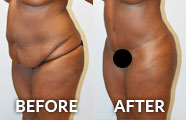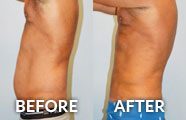
Heart disease is the leading cause of death in women, claiming approximately one life every minute, yet the American Heart Association estimates that 80% of cardiac events can be prevented with healthy lifestyle changes. Unfortunately, too few women are aware of how prevalent heart disease is, and how much they can do to reduce their chances of developing cardiac problems.
One of the most important things you can do to improve your heart health is to make healthier nutritional choices. Eating more whole grains and lean proteins and incorporating a variety of colorful fruits and vegetables to your daily diet can have a big impact on heart health by boosting your mineral, antioxidant, vitamin, and fiber intake. Along with those general guidelines, here are five specific changes you can make that will really benefit your heart:
Cut sugar. This may be the most important thing you can do for your overall health, and especially your heart health. Not only does excess sugar intake lead to increased inflammation, obesity, and liver disease, it can greatly increase your risk of dying from cardiovascular disease. The AHA recommends women confine their sugar intake to less than 6 teaspoons, or 100 calories a day. Remember to check your food labels! Sugar can show up in some surprising places, and even when you know it’s there, the amount can be much higher than you expect. For example, one can of regular soda exceeds the recommended daily limit by more than two teaspoons. Make “cutting sugar” #1 on your list of 2016 New Year’s Resolutions and reap the health benefits all year long.
Add avocados. Avocados are not only responsible for one of the best party foods ever—guacamole—they are packed with heart-healthy nutrients. They have more blood pressure- friendly potassium, folate and magnesium than all other fruits, and they are high in fiber. Avocados are also high in monounsaturated fat, a “good fat,” that when used to replace saturated or trans fats can lower LDL, or “bad,” cholesterol and increase HDL (“good”) cholesterol. Start your day with a slice of toast spread with a quarter of an avocado drizzled with olive oil for a healthy breakfast, or add a few slices to your salad at lunch.
Serve salmon. When it comes to fish, it’s hard to beat the heart-healthy benefits of wild salmon—luckily it’s delicious, too. Salmon is an oily fish that is loaded with antioxidants, protein, omega-3 fatty acids, and vitamins B and D. Omega-3 fatty acids reduce triglycerides and may serve to slightly reduce blood pressure as well as the risk arrhythmias. Two servings of salmon a week may reduce your risk of dying of a heart attack by up to one-third. Talk to your doctor to see if you would benefit from omega-3 fatty acid supplements as well.
Reduce sodium. Sugar is not the only thing that may be hiding in your foods without you noticing. Sodium is notorious for lurking in high amounts in canned and processed foods like soups and frozen dinners. Although the AHA recommends a limit of 1500 mg daily, most Americans consume more than twice that. This is unfortunate, because high doses of sodium can boost your blood pressure and increase your risk of heart disease and stroke. As with sugar, check your labels and choose lower-sodium options, or consider making your own soups where possible. When cooking, add as little salt as possible and allow guests to “season to taste” to avoid sodium overload.
Practice portion control. Of course, no diet is healthy if you overdo it. Avocados are as close to a superfood as you can get, but it’s not a good idea to eat three a day due to their calorie count. To get the most benefit from your healthy lifestyle change, eat three meals a day so you don’t get so hungry you eat too much all at once. When eating out, remember that restaurants sometimes serve as much as 2-3 times an ideal portion size—save some for lunch the next day, and maybe dinner, too. Use cups and scales to measure your servings until you are more accustomed to eyeballing proper portion sizes. And keeping a food diary is a great way to track everything you eat during the day. It also may help you lose weight by making you more mindful of your choices.
It’s always a good time to take better care of yourself, so why not start right now? Check out the AHA’s Go Red for Women website for a collection of delicious, heart-healthy recipes to try tonight. And, keep watching this blog for more information about Go Red for Women and other lifestyle changes that can help you live a longer, healthier, happier life!


